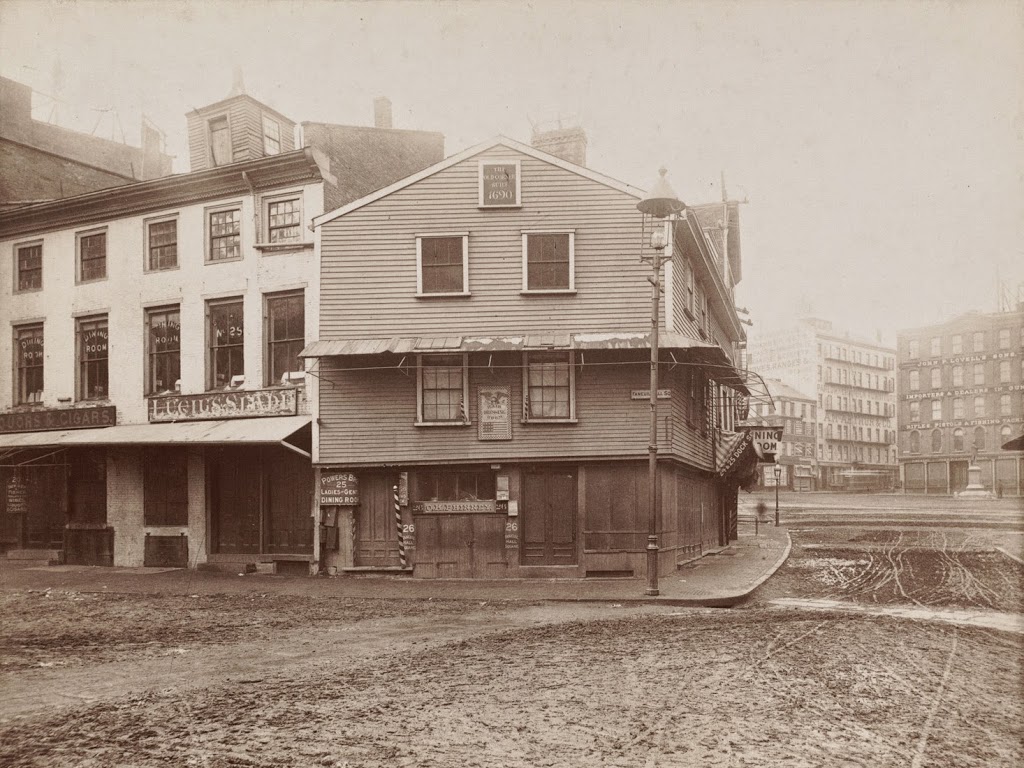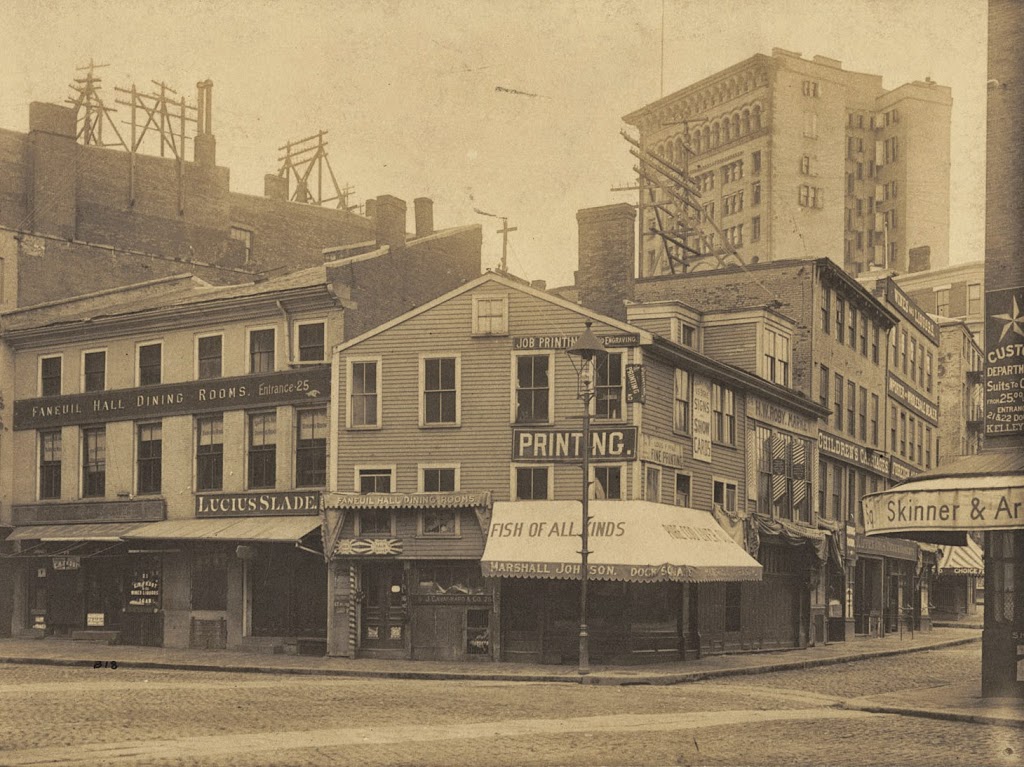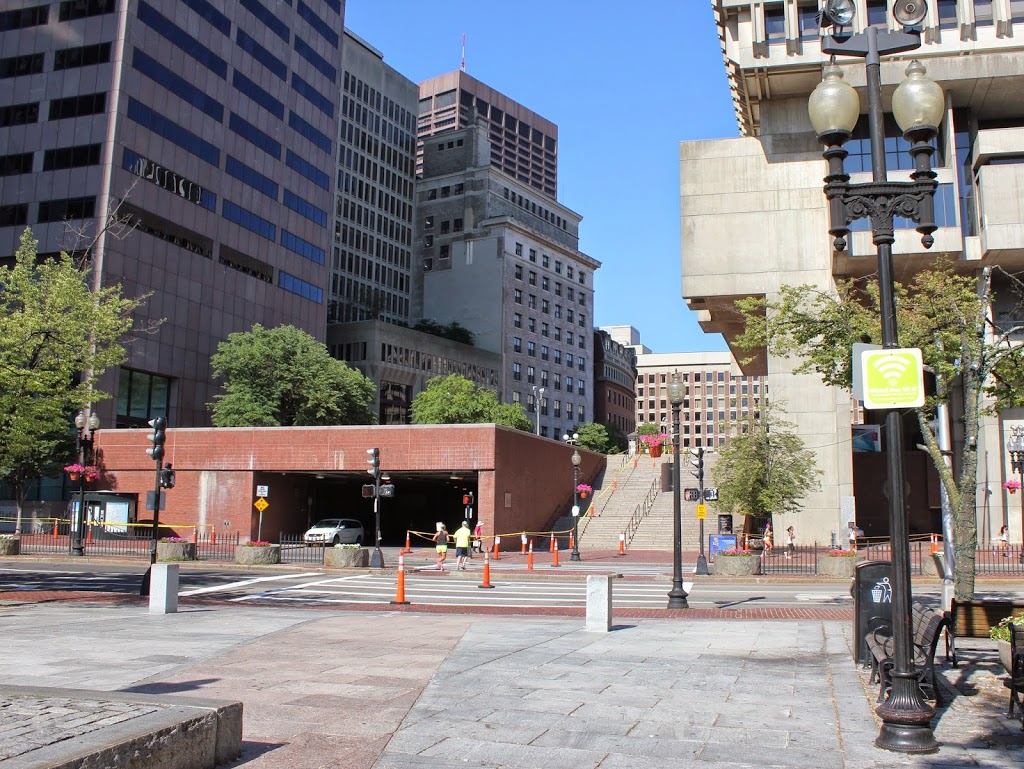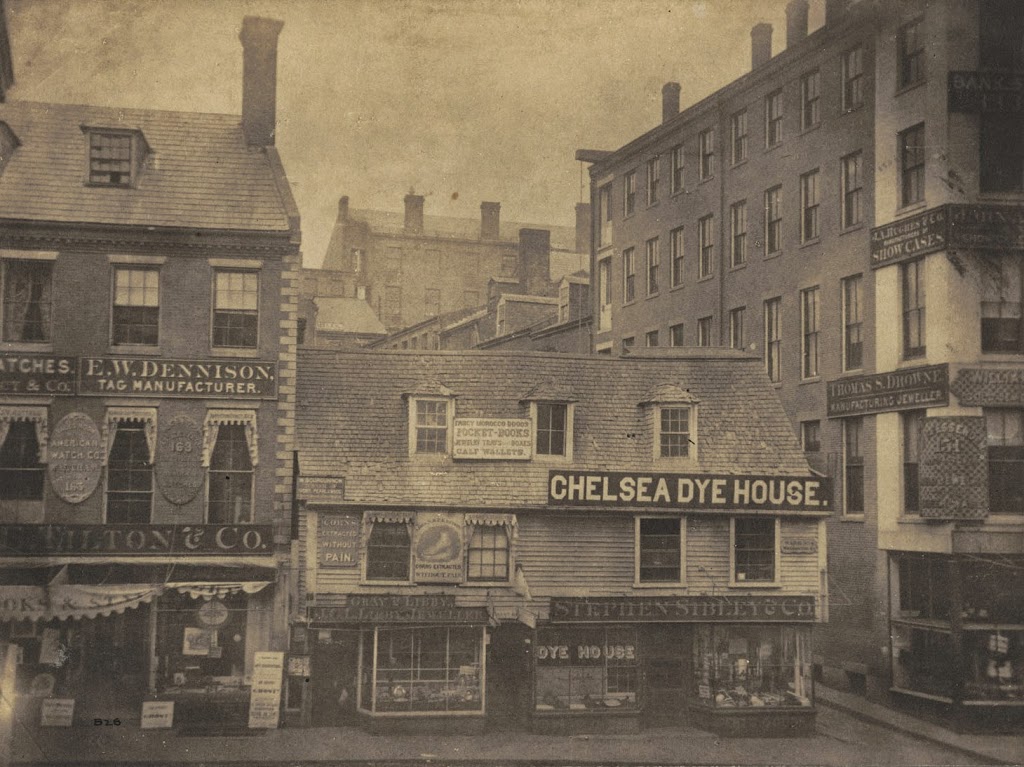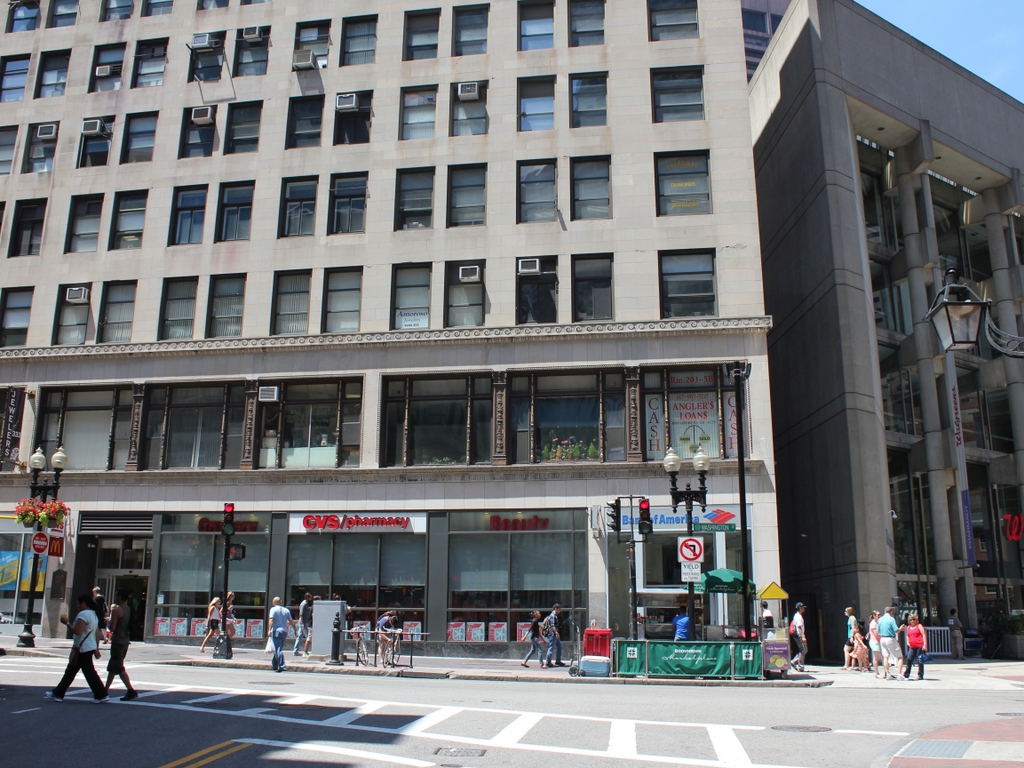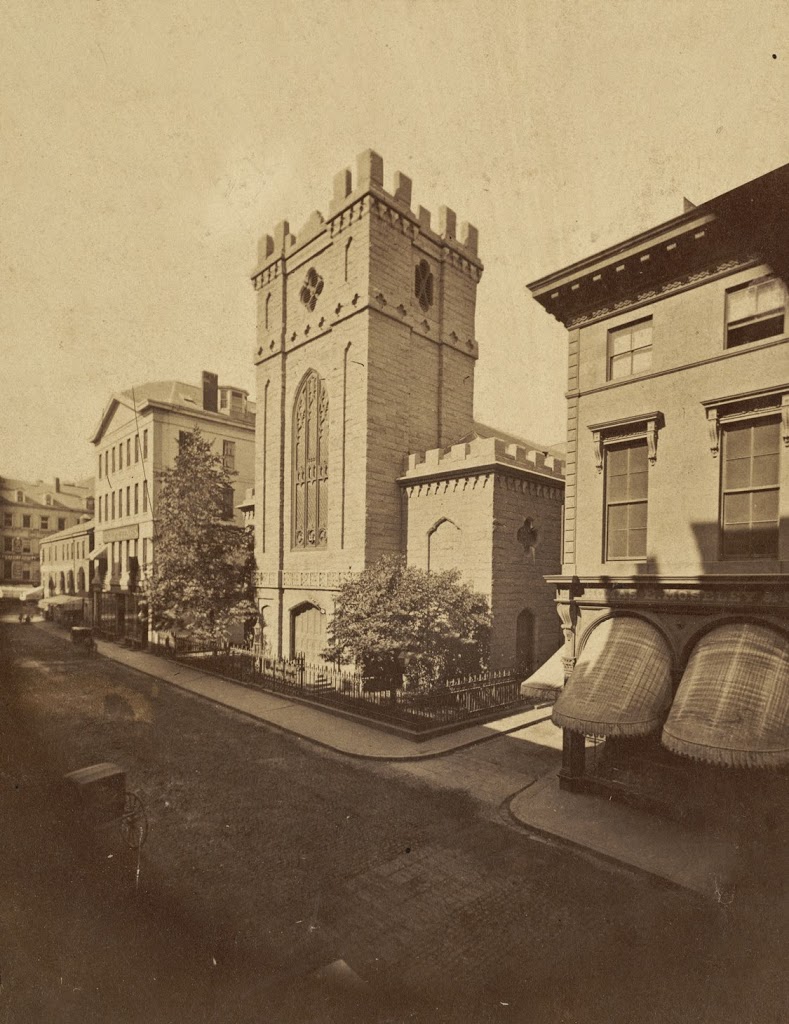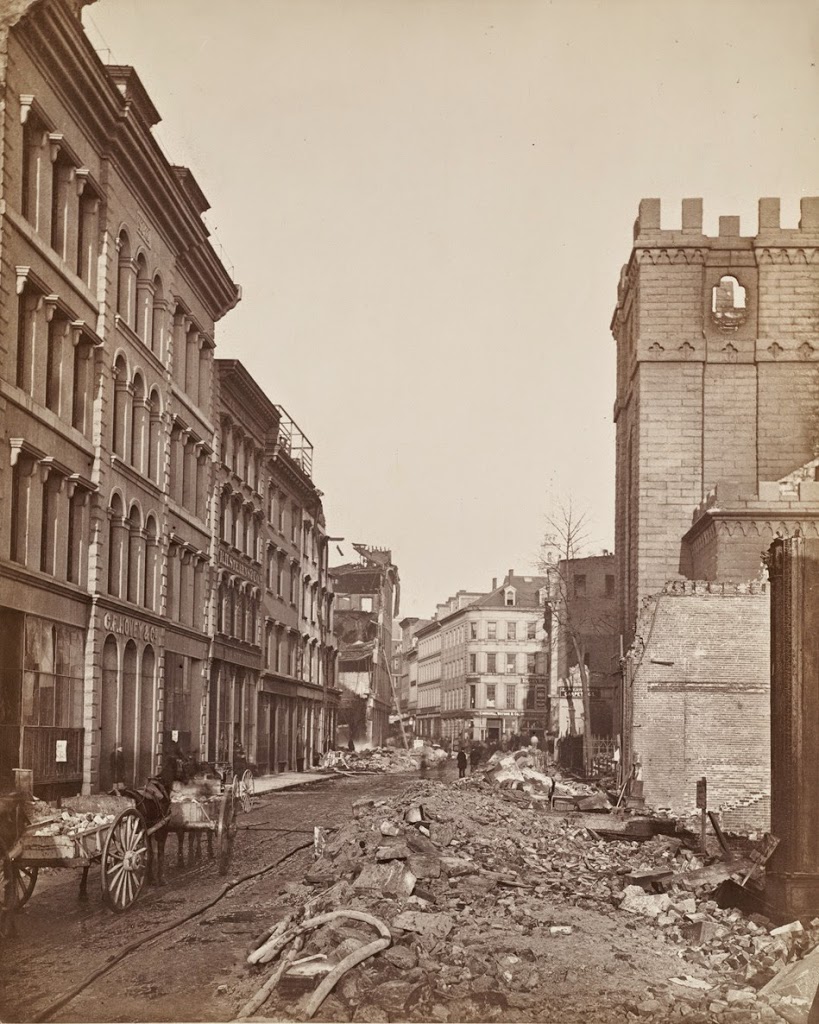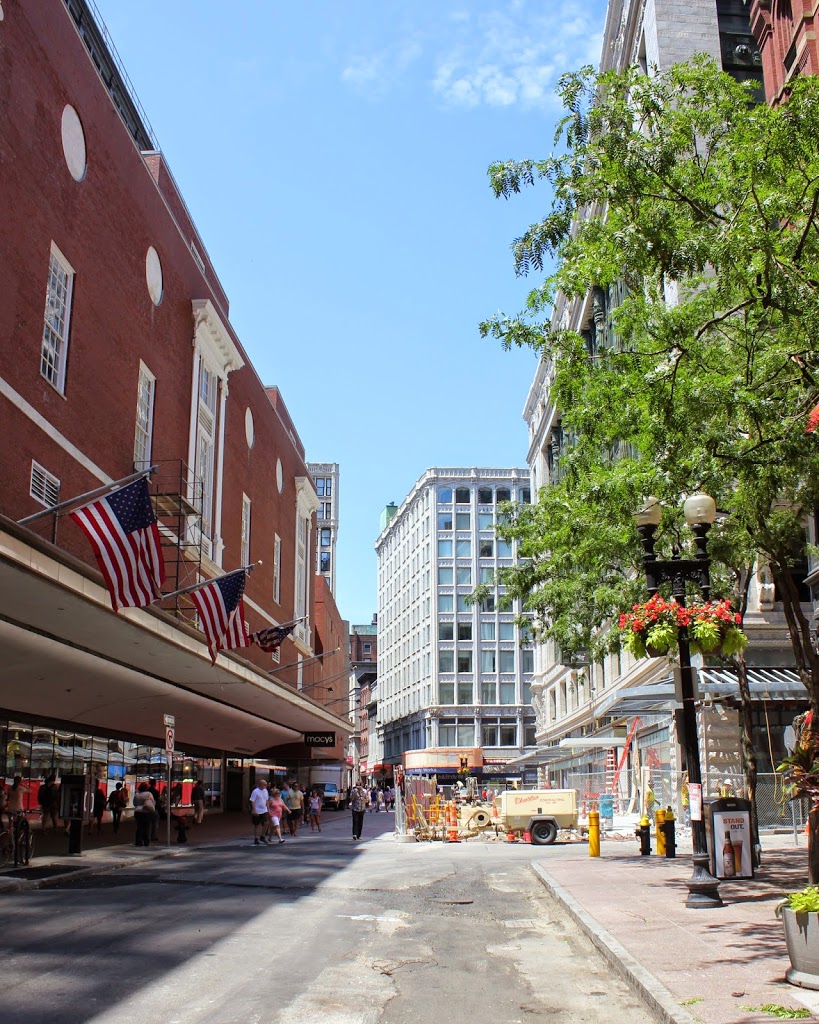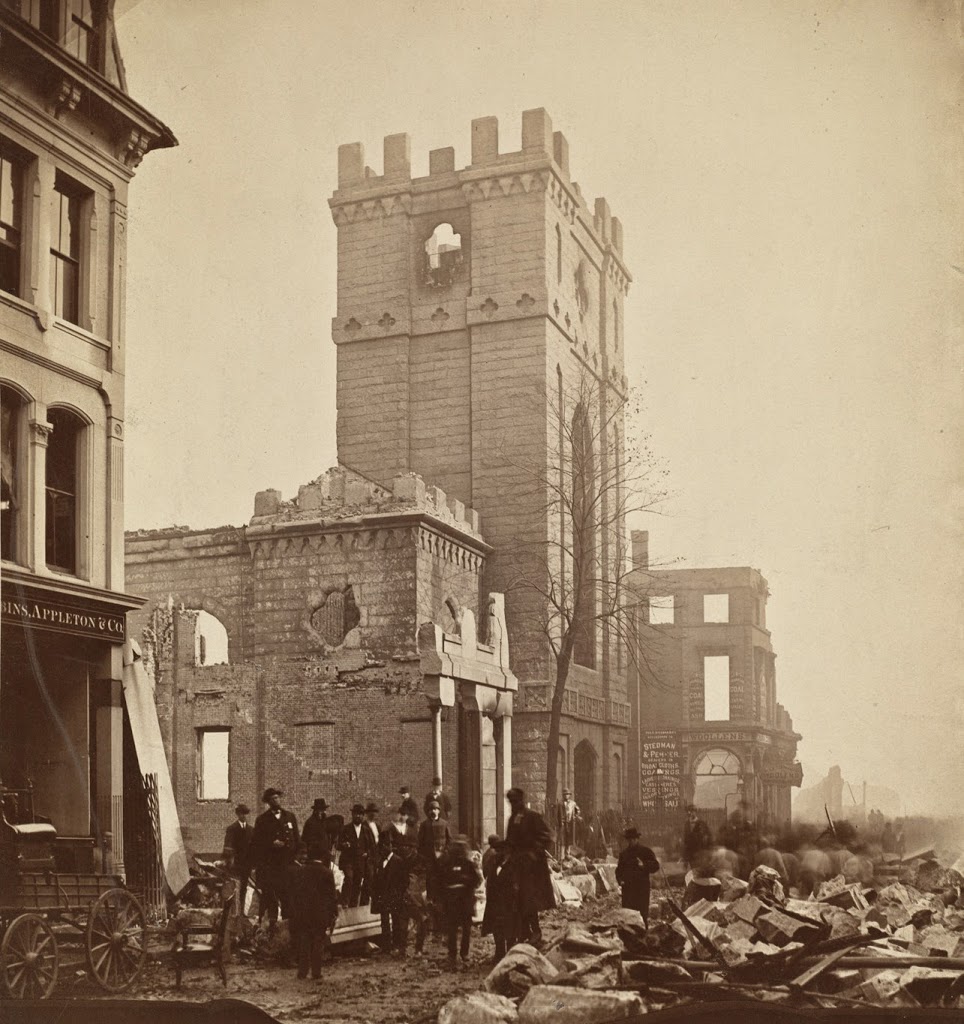The Sun Tavern at Dock Square, across from Faneuil Hall in Boston, sometime in the 1800s. Photo courtesy of Boston Public Library.
Dock Square and the Sun Tavern around 1898. Photo courtesy of Boston Public Library.
The scene in 2014:
According to the sign above the building in the first photo, the Sun Tavern was built in 1690, although some estimates that I have seen have dated its construction even earlier. In either case, the building was extremely old by the time it was photographed in 1898, It was a tavern by the first decade of the 18th century, although possibly earlier, and was at the time located right next to the town dock, hence the name of Dock Square. It wouldn’t be until over 50 years after it opened that its familiar neighbor, Faneuil Hall, was built, and another 80 years after that before Quincy Market was built atop what was once Boston Harbor.
The building survived until about 1910 (it appears in the 1908 atlas, but is gone by the 1912 one), and sometime in the 1920s or 1930s a good portion of Dock Square was torn down. The rest would come down in the 1960s, when the area that once made up Dock Square, Adams Square, and Scollay Square was demolished to build Boston City Hall, seen on the right-hand side of the 2014 photo.

